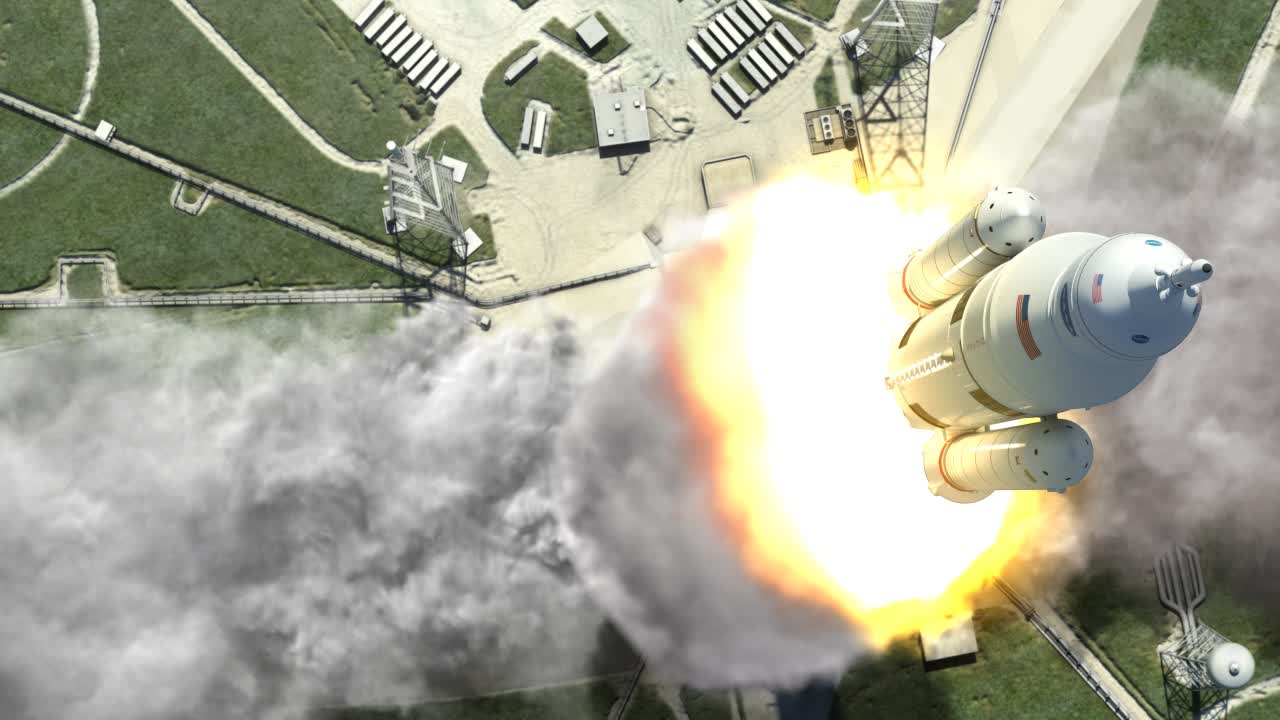NASA is going to Mars, and here on Earth, the agency’s Marshall Space Flight Center in Huntsville, Alabama, is the first stop for building the world’s most powerful rocket for the ride – the Space Launch System (SLS).
The SLS will be NASA’s first exploration-class vehicle since the Saturn V took American astronauts to the moon more than 40 years ago. It will expand our reach in the solar system, launching crews aboard the new Orion spacecraft to explore multiple, deep-space destinations. A fleet of robotic spacecraft and rovers are already on and around Mars, but to fly to and land humans safely on Mars requires a next-generation spacecraft – Orion. SLS will ensure it gets there.
The first SLS rocket, known as the Block I configuration with a 70-metric-ton (77 ton) lift capability, will be powered by twin boosters and four RS-25 engines. The next planned evolution of the SLS, Block 1B, would use a more powerful exploration upper stage to enable more ambition missions and a 105-metric-ton lift capacity, while a later evolution, Block 2, would add a pair of advanced solid or liquid propellant boosters to provide a 130-metric-ton (143-ton) lift capacity. In each configuration, SLS will continue to use the same core stage and four RS-25 engines.
The initial Block 1 configuration of SLS will stand 322 feet tall, higher than the Statue of Liberty. It will produce 8.4 million pounds of thrust at liftoff, the equivalent of 13,400 locomotive engines, and be capable of carrying 154,000 pounds of payload, about the same as 12 fully grown elephants. Block 1B and Block 2 each will be more than 363 feet tall, which is taller than the Saturn V rocket. The Block 2 configuration will provide 9.2 million pounds of thrust at liftoff and weigh 6.5 million pounds.
Marshall manages the SLS Program for the agency and has unique capabilities for the design and testing of different parts of the rocket. Marshall is the hub for work on several structural test articles for both the core and the upper stage of the rocket. Teledyne Brown Engineering of Huntsville is the prime contractor for the launch vehicle stage adapter, which connects the SLS core stage and the upper stage.
Two new test stands also are being built at Marshall to perform structural loads testing for the core stage, which is being manufactured at NASA’s Michoud Assembly Facility in New Orleans. Avionics and the flight computer also will be housed in the SLS core stage. Marshall has installed a structure and simulation capability to test the avionics system and model the environments the vehicle will experience during launch. The Boeing Company of Chicago is the prime contractor for the SLS core stage, including its avionics.
Marshall also oversees RS-25 testing at NASA’s Stennis Space Center near Bay St. Louis, Mississippi, and booster qualification testing at prime contractor Orbital ATK’s test facility in Promontory, Utah. The SLS Program has an inventory of 16 RS-25 flight engines being upgraded for SLS specifications, built by prime contractor Aerojet Rocketdyne of Sacramento, California.
On the program side, SLS recently completed its critical design review at Marshall. The in-depth review – the first in almost 40 years for a NASA exploration class vehicle — provides a final look at the design and development of the integrated rocket before full-scale fabrication begins. “We’ve picked the right vehicle for the journey to Mars,” said Garry Lyles, chief engineer for the SLS Program Office at the Marshall Center.
More SLS work at Marshall:
Hydrogen Burn-Off Igniter testing
For more information on SLS, visit:
Kimberly Henry
Marshall Space Flight Center, Huntsville, Alabama
256-544-0034
kimberly.m.henry@nasa.gov

























